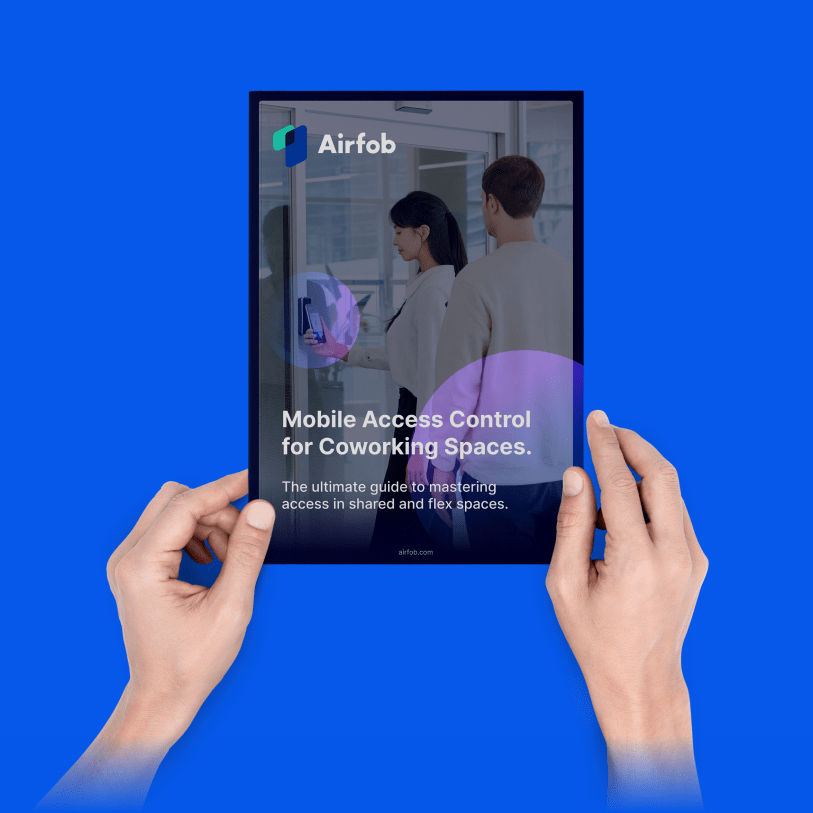The unique benefits of true mobile access control systems.
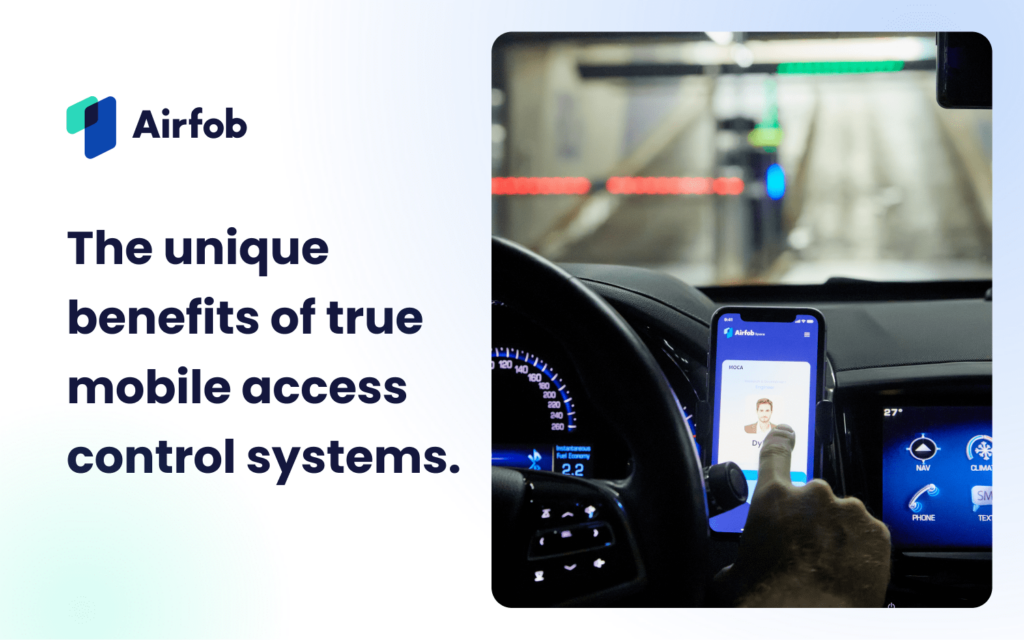
In a previous blog post, we explored the landscape of cloud access control solutions, breaking down the differences between cloud-hosted, cloud-managed, and cloud-native systems. While many providers claim to offer true Access Control as a Service (ACaaS), they often fall short of fully leveraging the cloud’s potential.
The same can be said for mobile access control. Today, we’ll dive into what it truly means for an access control system to be mobile-first. We’ll distinguish true mobile access control systems from traditional access control solutions that merely support mobile credentials, highlighting the features and benefits that define a fully mobile-enabled system.
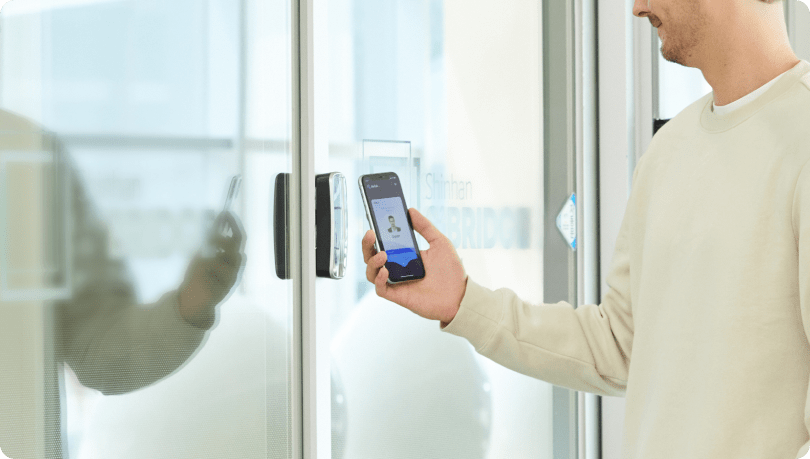
Offline reader, online management, all-time access.
Traditionally, access control readers are wired to ensure constant connectivity and reliability. Wired connections act as a power source and offer network connectivity. This way, online readers can benefit from real-time updates and continuous communication between the readers and the central management system.
Offline readers maybe be cheaper to install if you just look at the cost of the reader, but when you factor in the cost of controllers, servers, and the difficulty of scaling up later, the savings are more than offset. Also, updates, new user additions, and firmware changes necessitate physical access to each reader, making the process cumbersome and time-consuming.
Airfob readers address this challenge by offering both online and offline capabilities. When the database is updated with new users or access rights, Airfob’s offline readers can still operate seamlessly without requiring immediate internet connectivity.
This is made possible by the mobile-first approach of the system when it comes to authentication. This way, they maintain their functionality and only require an internet connection for specific tasks, such as updating firmware, opening doors remotely, or using RFID and Web cards.
This hybrid approach ensures that access control remains uninterrupted while still benefiting from the advantages of online management, such as real-time firmware updates and remote administration. It provides a balance between the reliability of wired connections and the flexibility of wireless operations, making it effective for various use cases.

No more door controllers. Just grow as you go.
Traditional access control systems often rely on door controllers to act as network gateways between readers, the door, and the central management system. These controllers require complex wiring and add to the overall installation and maintenance costs. Adding new doors to the system typically necessitates additional controllers, increasing both financial and operational burdens. Door controllers also store sensitive user information, adding a layer of security risk and complicating system scalability.
Airfob readers eliminate the need for separate door controllers by integrating the necessary control functions within each reader. This built-in door controller capability simplifies installation and reduces costs, as new doors only require the installation of new readers without additional wiring or equipment.
By removing the dependency on centralized door controllers, Airfob enables a more flexible and cost-effective solution that can easily adapt to growing and evolving access control needs.
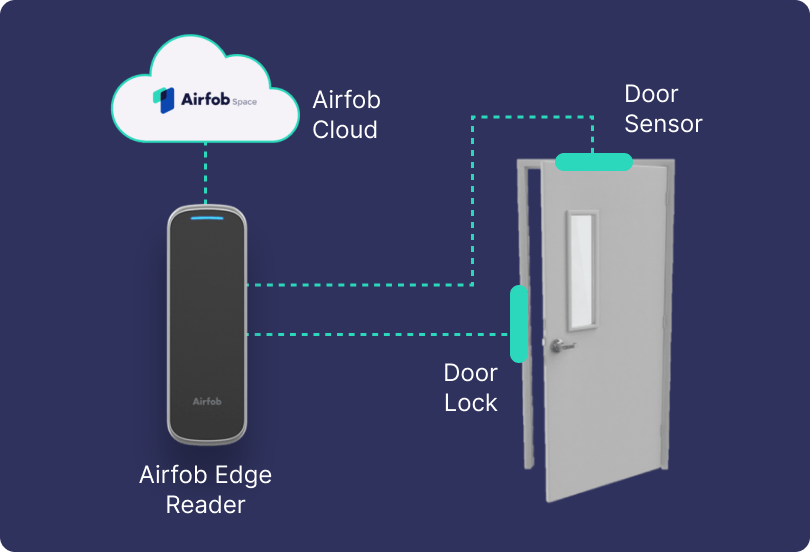
Remote and wireless door opening.
Airfob’s system allows for specific doors to be remotely opened with a simple long-press on the mobile card, or by tapping a web link available through Link Pass. These features are particularly useful for situations like remotely opening the office door for a guest, or the parking gates when driving up to the entrance. In these cases, the usual tap-and-go method may not be the most convenient or practical.
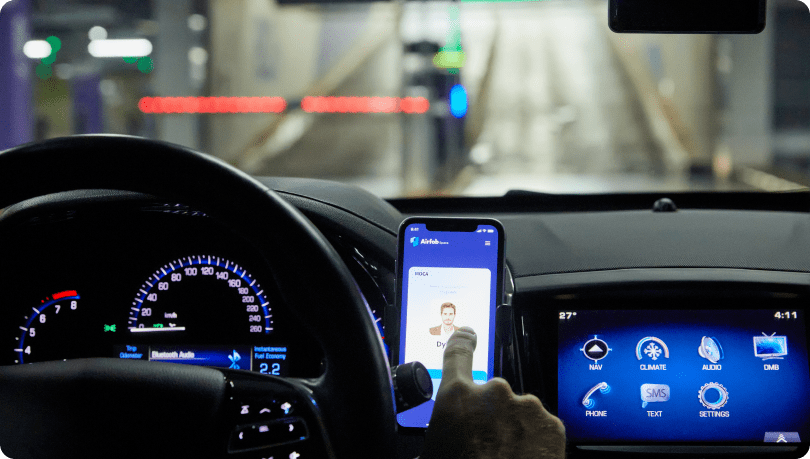
The ability to open doors remotely enhances user convenience, provides flexibility in managing access control, and ensures compliance with various operational and safety requirements.
Moreover, when an Airfob Reader is installed as the master device on either the entry or exit side of the door, a wireless Airfob Tag can be placed anywhere convenient, such as on the wall near the entrance. This tag functions as a slave device, capable of receiving signals from the user’s smartphone. When a user taps their smartphone on the Airfob Tag, the signal is sent to the cloud via the phone’s network connection. The cloud processes the signal and communicates with the master Airfob Reader to open the door.
This system eliminates the need for wired access control terminals on both sides of the door and allows for the door to be opened remotely.
This functionality is especially critical in scenarios where a sensor cannot be used as an exit device due to T&A (Time and Attendance) requirements or regulatory purposes, such as fire department regulations that mandate accurate tracking of the number of people on-site at any given time.
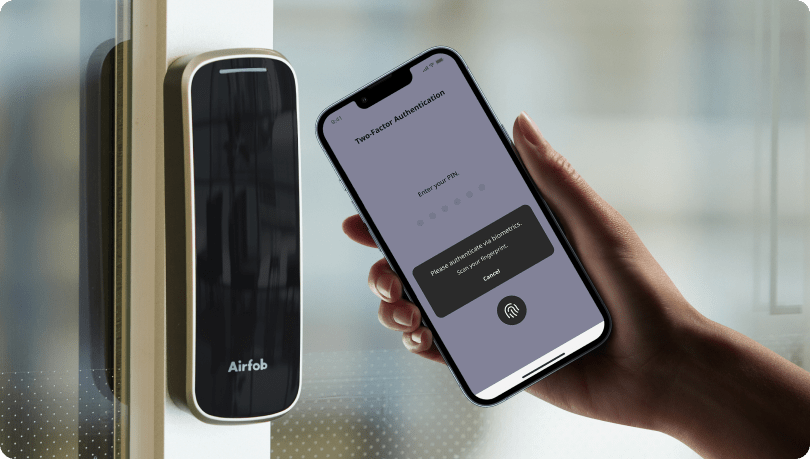
Biometric authentication without an expensive access terminal.
Innovations in mobile access control have introduced an added layer of security through smartphone-based biometric authentication, eliminating the need for expensive access terminals. Traditional systems often require specialized hardware for biometric verification, such as fingerprint scanners or facial recognition terminals, which can be costly and complex to install and maintain.
With mobile-based authentication, these security measures are seamlessly integrated into the user’s smartphone. Individuals can validate their mobile credentials using the phone’s built-in biometric features, such as face recognition or fingerprint scanning. This approach not only leverages the advanced security capabilities of modern smartphones but also simplifies the access control process. Users can authenticate their identities quickly and securely without the need for additional hardware.
By bypassing the requirement for dedicated biometric terminals, organizations can reduce installation and maintenance costs while still ensuring a high level of security. Mobile-based authentication provides a convenient and secure method for access control, enhancing user experience and reliability. This innovation aligns with the growing trend of utilizing everyday devices for multifaceted applications, making advanced security measures more accessible and cost-effective.
As we’ve seen, truly mobile-first access control systems offer a range of unique benefits that go beyond merely supporting mobile credentials. But the landscape of mobile access control is rapidly evolving, and new innovations are continually reshaping how we think about security and convenience. As we look to the future, the question isn’t just about adopting mobile access control—it’s about choosing the right solution that will grow with your needs and help you stay ahead in an ever-changing environment.
How will your access control strategy adapt to these new possibilities? Stay tuned as we continue to explore the latest trends and technologies driving the future of access control.
FREE EBOOK
The ultimate guide to mastering access in shared and flex spaces.
Download your
free eBook!
This eBook is particularly valuable for coworking space owners, managers, and anyone interested in the future of flexible work environments.
